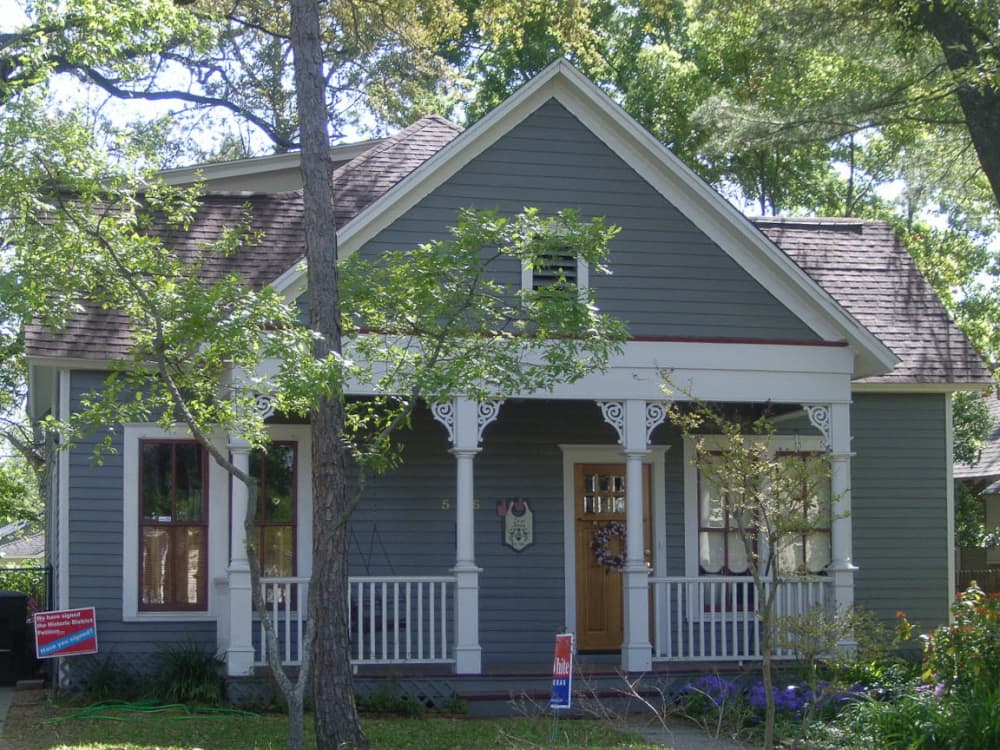Less than 50 percent approval
"A great day for preservation": Three new historic districts approved in Houston
 Woodland Heights
Woodland Heights Glenbrook ValleyPhoto by David Bucek
Glenbrook ValleyPhoto by David Bucek Heights South
Heights South
In an historic moment for historic preservation in Houston, City Council passed a resolution to designate three neighborhoods — Heights South, Woodland Heights and Glenbrook Valley — as the city's newest historic districts. After months of petitions, infighting and mudslinging, the areas' irreplaceable renditions of Arts & Crafts bungalows, Victorian manses and mid-century modern palaces will endure.
"I don't know where to start," Minnette Boesel, the mayor's assistant for cultural affairs, said. "It's a great day for preservation, and demonstrates the value of historic areas and what city council stands for."
Standing outside the council chambers, Boesel cited enhanced property values and tax cuts for proper restoration as some of the benefits residents of the three districts can expect.
In no-zoning obsessed Houston, the halt on thoughtless construction represents a monumental triumph.
"We've lost some incredible structures because the old ordinance had no teeth," said Woodland Heights resident Vicky Bettis as she celebrated the victory amid a handful of joyous, tearful preservationists from the Heights. With the passage of the resolution, the residents have spoken, communicating, "No more," to speculative real estate developers and their visions of McMansions and congested townhouses.
The three new districts will also benefit from the stricter preservation ordinance spearheaded by Mayor Annise Parker in 2010. Now, new construction, demolition, renovations and building additions must be proposed by property owners to the Houston Archaeological and Historical Commission for approval based on the aesthetic of the surrounding homes, after which a Certificate of Appropriateness may be granted. In no-zoning obsessed Houston, the halt on thoughtless construction represents a monumental triumph.
City Council voted 9-5 in favor of Heights South and Woodland Heights and 10-4 in favor of Glenbrook Valley. In the period leading up to the vote, dissenting council members voiced rapturous concern over the designation process, which in the case of Glenbrook Valley, has incited face-offs between preservationists and non-native English speakers who felt confused or duped by the petition rally and the designation's provisions.
"This whole process reeks," said Jolanda Jones (At-Large 5), citing fuzzy math and the "tantamount" position of property rights in the U.S. Echoed a virulent Oliver Pennington (District G), "The procedures pit neighbors against neighbors," and C.O. Bradford (At-Large 4), argued that throughout the designation process, "fundamental fairness and due process have been breached ... This is not about historic preservation — some of us simply can't evade the path of duty."
After an original 54-percent approval via petitions, 155 residents retracted their votes, dropping the approval to 45 percent, below the 51 percent requirement.
"I don't understand how less than 50 percent, even 66 or 70 percent, can pass," Jones said. Still, the resolution succeeded following her testimony. Glenbrook Valley can now declare itself the first post-World War II historic district in Texas.
"I think the animosity was blown out of proportion," Heights South resident Greg Wright said. "The argument wasn't as much between neighbors as it was between realtors."
Don't expect exalted "Historic District" street signs to emerge in the three neighborhoods anytime soon. At $300 per intersection, the street pole revamp may have to wait until after the municipal government fully recovers from the economic downturn.





